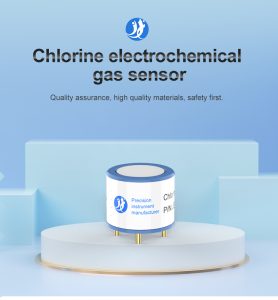Introduction Gas sensors play a crucial role in monitoring and maintaining air quality in both industrial and urban environments. These sensors are designed to detect and measure the presence of various gases, providing valuable data for ensuring safety, environmental protection, and public health. In this article, we will explore the versatility of gas sensors and their applications in industrial and urban settings, highlighting their significance in different contexts and the advancements that have been made in sensor technology.

Industrial Applications In industrial settings
gas sensors are essential for ensuring workplace safety and preventing potential hazards associated with the release of toxic or flammable gases. These sensors are commonly used in manufacturing facilities, chemical plants, refineries, and other industrial environments where the presence of hazardous gases poses a risk to workers and the surrounding environment.
One of the primary functions of gas sensors
in industrial settings is to continuously monitor the levels of various gases, such as carbon monoxide, hydrogen sulfide, methane, and volatile organic compounds (VOCs). By detecting the presence of these gases at the earliest stage, gas sensors can trigger alarms and initiate safety protocols to prevent accidents and protect personnel from exposure to harmful substances.
Moreover
gas sensors are integral to the maintenance of air quality in indoor industrial spaces, where ventilation systems rely on real-time data to regulate airflow and remove pollutants. By monitoring indoor air quality, gas sensors contribute to creating a healthier and safer working environment for employees, reducing the risk of respiratory problems and long-term health issues associated with poor air quality.
Furthermore
gas sensors are essential for emissions monitoring and compliance with environmental regulations in industrial facilities. By accurately measuring and recording gas emissions, companies can ensure that they are operating within permissible limits and take corrective actions to minimize their environmental impact.
Urban Applications In urban settings
gas sensors play a critical role in monitoring air quality and addressing environmental concerns related to pollution and public health. With the rapid urbanization and increasing population density in cities, the demand for effective air quality monitoring systems has become more pressing than ever.
Gas sensors are deployed across urban areas to measure the levels of pollutants
including nitrogen dioxide, sulfur dioxide, ozone, and particulate matter. These sensors provide valuable data for assessing air quality, identifying pollution hotspots, and implementing targeted measures to mitigate the impact of harmful emissions on public health and the environment.
In addition to outdoor air quality monitoring
gas sensors are also used in indoor environments, such as schools, offices, and residential buildings, to ensure that occupants are not exposed to elevated levels of indoor air pollutants. By detecting and alerting occupants to the presence of harmful gases, such as carbon dioxide and volatile organic compounds, gas sensors contribute to creating healthier indoor spaces and reducing the risk of indoor air pollution-related health issues.
Furthermore
gas sensors are employed in smart city initiatives to enable real-time monitoring of air quality and support data-driven decision-making for urban planning and environmental policies. By integrating gas sensor data with other sources of information, such as traffic patterns and weather conditions, cities can develop targeted strategies to reduce pollution levels and enhance the overall quality of life for residents.
Advancements in Sensor Technology The versatility of gas sensors in industrial and urban settings has been further enhanced by advancements in sensor technology. Modern gas sensors are equipped with advanced features, such as wireless connectivity, low power consumption, and increased sensitivity to a wide range of gases, making them more adaptable to diverse applications and environmental conditions.
Furthermore, the miniaturization of gas sensor components has led to the development of compact and portable sensor devices that can be easily deployed in various settings, including wearable sensors for personal exposure monitoring and handheld devices for on-site gas detection.
Additionally, the integration of gas sensors with Internet of Things (IoT) platforms has enabled the creation of interconnected sensor networks that can provide real-time data on gas concentrations and environmental conditions across large industrial complexes and urban areas. These interconnected systems facilitate remote monitoring and predictive maintenance, allowing for proactive interventions to prevent air quality issues and ensure the efficient operation of industrial processes and urban infrastructure.
Conclusion Gas sensors are indispensable tools for monitoring air quality and ensuring safety in both industrial and urban environments. Their versatility and adaptability make them essential for addressing a wide range of challenges related to gas detection, emissions monitoring, and air quality management. As sensor technology continues to advance, the potential for gas sensors to contribute to a healthier and more sustainable future for industrial operations and urban communities is boundless.

In conclusion, the significance of gas sensors in industrial and urban settings cannot be overstated, and their continued development and integration into smart systems will play a crucial role in shaping a cleaner, safer, and more environmentally conscious world.
In summary, gas sensors are GPT-3.5 indispensable tools for monitoring air quality and ensuring safety in both industrial and urban environments. Their versatility and adaptability make them essential for addressing a wide range of challenges related to gas detection, emissions monitoring, and air quality management. As sensor technology continues to advance, the potential for gas sensors to contribute to a healthier and more sustainable future for industrial operations and urban communities is boundless.
 : +86 155 8830 2704
: +86 155 8830 2704 : jxdziot@gmail.com
: jxdziot@gmail.com
